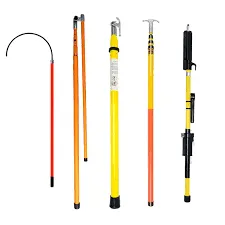
-
 Afrikaans
Afrikaans -
 Albanian
Albanian -
 Amharic
Amharic -
 Arabic
Arabic -
 Armenian
Armenian -
 Azerbaijani
Azerbaijani -
 Basque
Basque -
 Belarusian
Belarusian -
 Bengali
Bengali -
 Bosnian
Bosnian -
 Bulgarian
Bulgarian -
 Catalan
Catalan -
 Cebuano
Cebuano -
 Corsican
Corsican -
 Croatian
Croatian -
 Czech
Czech -
 Danish
Danish -
 Dutch
Dutch -
 English
English -
 Esperanto
Esperanto -
 Estonian
Estonian -
 Finnish
Finnish -
 French
French -
 Frisian
Frisian -
 Galician
Galician -
 Georgian
Georgian -
 German
German -
 Greek
Greek -
 Gujarati
Gujarati -
 Haitian Creole
Haitian Creole -
 hausa
hausa -
 hawaiian
hawaiian -
 Hebrew
Hebrew -
 Hindi
Hindi -
 Miao
Miao -
 Hungarian
Hungarian -
 Icelandic
Icelandic -
 igbo
igbo -
 Indonesian
Indonesian -
 irish
irish -
 Italian
Italian -
 Japanese
Japanese -
 Javanese
Javanese -
 Kannada
Kannada -
 kazakh
kazakh -
 Khmer
Khmer -
 Rwandese
Rwandese -
 Korean
Korean -
 Kurdish
Kurdish -
 Kyrgyz
Kyrgyz -
 Lao
Lao -
 Latin
Latin -
 Latvian
Latvian -
 Lithuanian
Lithuanian -
 Luxembourgish
Luxembourgish -
 Macedonian
Macedonian -
 Malgashi
Malgashi -
 Malay
Malay -
 Malayalam
Malayalam -
 Maltese
Maltese -
 Maori
Maori -
 Marathi
Marathi -
 Mongolian
Mongolian -
 Myanmar
Myanmar -
 Nepali
Nepali -
 Norwegian
Norwegian -
 Norwegian
Norwegian -
 Occitan
Occitan -
 Pashto
Pashto -
 Persian
Persian -
 Polish
Polish -
 Portuguese
Portuguese -
 Punjabi
Punjabi -
 Romanian
Romanian -
 Russian
Russian -
 Samoan
Samoan -
 Scottish Gaelic
Scottish Gaelic -
 Serbian
Serbian -
 Sesotho
Sesotho -
 Shona
Shona -
 Sindhi
Sindhi -
 Sinhala
Sinhala -
 Slovak
Slovak -
 Slovenian
Slovenian -
 Somali
Somali -
 Spanish
Spanish -
 Sundanese
Sundanese -
 Swahili
Swahili -
 Swedish
Swedish -
 Tagalog
Tagalog -
 Tajik
Tajik -
 Tamil
Tamil -
 Tatar
Tatar -
 Telugu
Telugu -
 Thai
Thai -
 Turkish
Turkish -
 Turkmen
Turkmen -
 Ukrainian
Ukrainian -
 Urdu
Urdu -
 Uighur
Uighur -
 Uzbek
Uzbek -
 Vietnamese
Vietnamese -
 Welsh
Welsh -
 Bantu
Bantu -
 Yiddish
Yiddish -
 Yoruba
Yoruba -
 Zulu
Zulu


Oct . 31, 2024 11:52 Back to list
Similar Ground Rod Concepts for Effective Short-Circuit Protection and Grounding Solutions
Understanding Short Ground Rods Their Importance and Applications
In our increasingly electrified world, the significance of grounding systems cannot be overstated. Short ground rods are a critical component of these systems, primarily tasked with ensuring safety and maintaining electrical system integrity. This article delves into the concept of short ground rods, their applications, and the benefits they provide in various electrical installations.
What is a Short Ground Rod?
A ground rod is a metal rod, typically made of copper or galvanized steel, that is driven into the ground to provide a low-resistance path for electrical currents. Short ground rods are generally defined as those that are less than the standard 8-foot length commonly used in many installations. While traditional ground rods are preferred for their deeper grounding capabilities, short ground rods have specific applications where their size is advantageous.
Applications of Short Ground Rods
1. Residential Installations Short ground rods are often used in residential settings, especially for grounding small electrical equipment like antennas and satellite dishes. These applications require a reliable ground but do not necessarily need a full-length rod due to the limited energy they conduct.
2. Temporary Installations In cases where temporary grounding is needed—such as during construction or outdoor events—short ground rods serve an effective solution. Their lightweight and easy portability allow for quick setup and dismantling, ensuring safety without permanent alterations to the site.
3. Low-Power Equipment Equipment that operates at lower power levels, such as garden lights, small generators, or electric fences, can benefit from short ground rods. Since these systems require less robust grounding, short rods provide adequate protection without the need for extensive installation.
short ground rod

4. Specific Environmental Conditions In some environments, such as areas with solid rock or very sandy soil, driving a long ground rod can be highly challenging. Short ground rods can be more easily installed in such conditions, providing necessary grounding even when conventional methods fail.
Benefits of Short Ground Rods
1. Ease of Installation The shorter length of these rods allows for quick and easier installation, making them ideal for DIY projects. They require less labor and are easier to handle, especially in confined spaces.
2. Cost-Effective Short ground rods typically come at a lower cost compared to their longer counterparts. This makes them an appealing option for budget-conscious projects without compromising safety standards.
3. Flexibility in Use Their versatility allows short ground rods to be used in various applications, whether permanent or temporary. This adaptability makes them a valuable asset for many electrical and electronic installations.
4. Safety Enhancement Above all, short ground rods contribute to safety. By providing a reliable path to earth, they help dissipate stray current, reducing the risk of electric shock or equipment damage.
Conclusion
Short ground rods play an essential role in ensuring electrical safety across numerous applications. Their versatility, cost-effectiveness, and ease of installation make them suitable for various settings, from residential to temporary installations. As technology continues to evolve, understanding and utilizing different types of grounding methods, including short ground rods, will be pivotal in maintaining safe and efficient electrical systems. Whether you are a homeowner, a contractor, or simply a DIY enthusiast, recognizing the value of these grounding solutions is crucial for effective electrical management.
Latest news
What Are Construction Tools and How Are They Used?
NewsJul.11,2025
Professional-Grade Duct Rodding Tools for Superior Cable Installation
NewsJul.11,2025
Enhancing Safety and Efficiency with Modern Hot Stick Solutions
NewsJul.11,2025
Empowering Cable Installation with Advanced Rodder Solutions
NewsJul.11,2025
Elevate Your Cable Installation Projects with Cable Pulling Tools
NewsJul.11,2025
Efficient Cable Handling Solutions: Cable Rollers for Sale
NewsJul.11,2025











